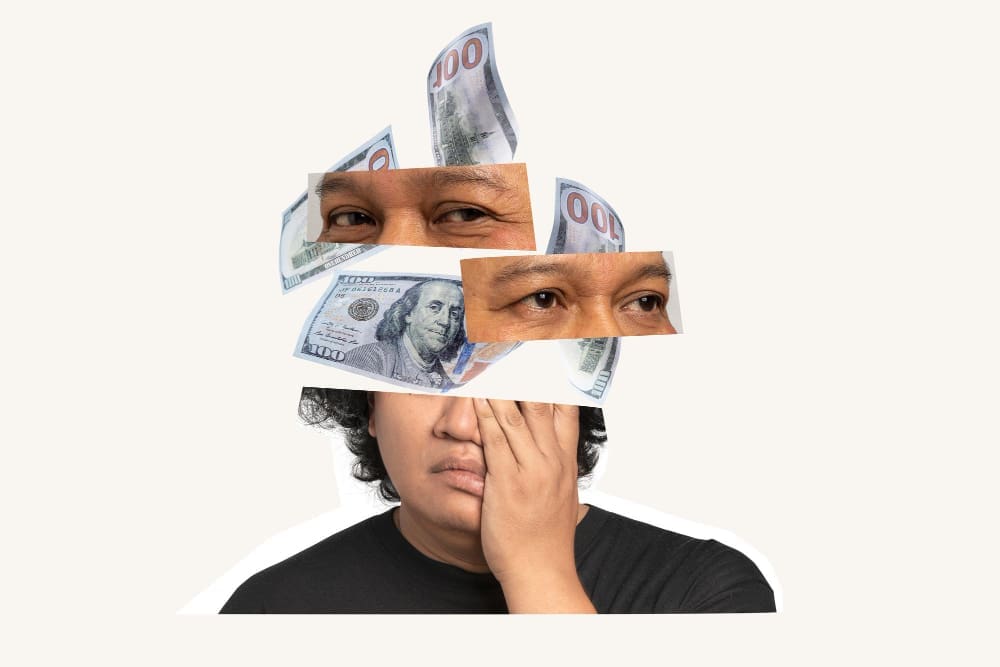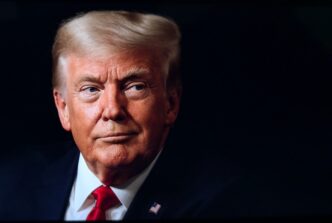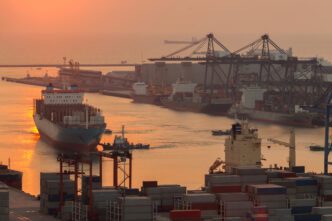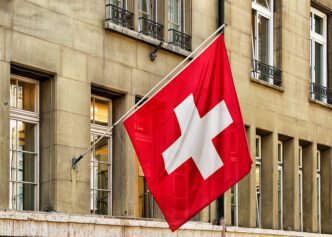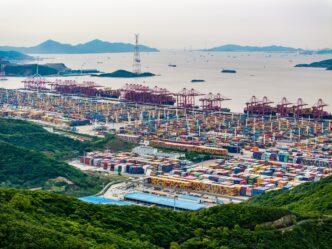Executive Summary
- Chicago Federal Reserve President Austan Goolsbee characterized President Trump’s extensive tariffs as “stagflationary,” a view influencing the Federal Reserve’s decision to pause interest rate cuts.
- Tariffs are linked to current economic conditions showing rising inflation (consumer and wholesale) and a slowing job market, contributing to stagflation.
- The Federal Reserve is experiencing internal dissents on interest rate policy and external pressure from the White House to lower rates, with futures markets predicting a September rate cut.
The Story So Far
- President Trump’s extensive tariffs are characterized as “stagflationary,” meaning they contribute to both rising prices and slowing economic growth.
- The Federal Reserve is currently pausing interest rate cuts due to concerns about these stagflationary effects, despite pressure from the White House.
- There is ongoing political pressure from the White House on the Federal Reserve to lower interest rates.
Why This Matters
- President Trump’s tariffs are characterized as “stagflationary,” indicating that consumers and businesses may continue to face the dual challenge of rising prices and slowing economic growth.
- The Federal Reserve’s concern about the stagflationary effects of tariffs is a primary reason for its pause on interest rate cuts, suggesting borrowing costs may remain elevated despite political pressure.
- Ongoing White House pressure and recent appointments to the Federal Reserve could challenge the central bank’s independence, potentially influencing future interest rate decisions.
Who Thinks What?
- Chicago Federal Reserve President Austan Goolsbee and many central bankers characterize President Trump’s extensive tariffs as “stagflationary,” believing they contribute to rising prices and slowing economic growth, which influences the Federal Reserve’s decision to pause interest rate cuts.
- The White House and President Trump are frustrated with the Federal Reserve’s decision to pause interest rate cuts and are exerting pressure on the Fed to lower interest rates.
- Federal Reserve Governors Christopher Waller and Michelle Bowman dissented from the majority’s decision to pause rates, advocating instead for a quarter-point rate reduction.
Chicago Federal Reserve President Austan Goolsbee recently characterized President Trump’s extensive tariffs as “stagflationary,” reflecting a prevalent view among central bankers that has influenced the Federal Reserve’s decision to pause interest rate cuts, despite White House frustration. Goolsbee made his remarks on Friday during an appearance on the CNBC television network, stating that tariffs possess a “heavy stagflationary component.”
Economic Implications of Tariffs
The term “stagflation” describes an economic condition marked by the simultaneous occurrence of rising prices and slowing economic growth. This combination is typically considered unusual under normal economic circumstances, as prices tend to accelerate during expansion and decelerate during periods of weaker economic activity.
Recent economic data points have indicated a departure from these conventional correlations, with many economists viewing tariffs as a significant shock to economic supply. Since President Trump’s tariffs were initially announced in April, the consumer price index has increased to a 2.7 percent annual rate. Furthermore, wholesale inflation, excluding food and energy, recorded its fastest monthly increase in July since 2022.
Concurrently, the job market has shown signs of slowing, adding a total of 106,000 jobs since May. This figure falls below the estimated 80,000 to 100,000 jobs needed monthly to account for regular workforce attrition.
Goolsbee differentiated between “transitory” inflation stemming from tariffs and inflation that necessitates a direct response from the Federal Reserve. He highlighted the potential for secondary effects, such as “wage-price spirals,” which are positive feedback loops between escalating unit labor costs and higher prices. He noted that the increased cost of production for domestic manufacturing, due to tariffs, often takes time to permeate the broader economy.
Understanding Tariffs and Their Effects
Tariffs are essentially taxes imposed on foreign goods and services. While they are directly paid by American importers, their ultimate cost can be borne by various entities within the supply chain, including importers, exporters, manufacturers, wholesalers, retailers, or consumers through price increases.
These duties can have complex and far-reaching effects on the economy, potentially reducing demand for specific goods and prompting companies to adjust their supply chains. The costs associated with tariffs may be absorbed through reduced profit margins or passed along through the value chain. Businesses might also modify their production schedules to maintain desired ratios between costs and markup. Total U.S. capacity utilization has slightly decreased since February, though it remains around 77 percent.
Customs duties, primarily derived from tariffs, surpassed $100 billion for the first time during a fiscal year earlier this summer. Recent monthly revenues include $23 billion in May, $27 billion in June, and $28 billion in July. The Congressional Budget Office previously estimated that tariff revenues, including their debt-service effects, could reduce federal deficits by $3 trillion over the next decade.
Federal Reserve Dynamics and Political Pressure
While Goolsbee underscored the stagflationary concerns about tariffs, which Federal Reserve Chair Jerome Powell has also frequently discussed, not all members of the Fed’s interest rate-setting committee share identical views. During the Fed’s July meeting, two governors, Christopher Waller and Michelle Bowman, dissented from the majority’s decision to pause rates, advocating instead for a quarter-point rate reduction.
These dissents follow a sustained pressure campaign from the White House targeting the Federal Reserve. This campaign saw Fed Governor Adriana Kugler resign earlier this month, with Stephen Miran, former White House Council of Economic Advisers chair, appointed as her replacement. Miran’s appointment is widely anticipated to intensify pressure on the Fed to lower interest rates in alignment with President Trump’s demands.
As of Friday, futures markets indicated a 91 percent probability of a quarter-point rate cut occurring in September.
Conclusion
The debate surrounding the economic impact of tariffs, particularly their potential to induce stagflationary conditions, continues to be a central factor influencing the Federal Reserve’s monetary policy decisions. This dynamic is further complicated by internal dissents within the Fed and ongoing pressure from the White House regarding interest rate adjustments, highlighting the complex interplay between trade policy, economic indicators, and central bank autonomy.


